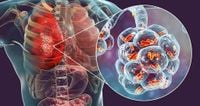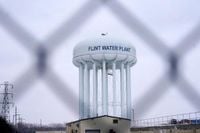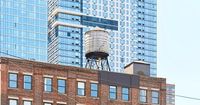As summer temperatures rise, New York City finds itself at the center of a growing public health challenge: an outbreak of Legionnaires’ disease in Central Harlem has surged, with over 80 reported cases and three deaths as of August 8, 2025, according to the New York City Department of Health and Mental Hygiene. This cluster, which has more than doubled in recent weeks, is the latest in a concerning trend of increasing Legionnaires’ disease cases nationally, as reported by the Centers for Disease Control and Prevention (CDC).
The outbreak has been concentrated in several Harlem ZIP codes—10027, 10030, 10035, 10037, and 10039—prompting health officials to issue urgent advisories to residents and workers in these neighborhoods. While the risk to the general public remains low, those living or working in the affected areas are strongly encouraged to seek medical care immediately if they develop flu-like symptoms, particularly if they are over 50, smoke, or have chronic lung conditions or weakened immune systems. These groups are at heightened risk of severe illness if exposed to the Legionella pneumophila bacteria, which causes the disease.
Legionnaires’ disease is a severe form of pneumonia, and its symptoms often resemble the flu: fever, cough, chills, muscle aches, and shortness of breath. Some patients may also experience diarrhea or confusion. Dr. Matthew Simon, chief hospital epidemiologist at New York-Presbyterian Hospital/Weill Cornell Medical Center, explained to Health Matters, “The Legionella bacteria thrives in warmer water, between 68° and 113° F, and we do see a seasonal peak in the summer and late fall, partly related to air conditioning use because building water and ventilation systems may allow conditions for the bacteria to thrive.”
Unlike the viruses that often make headlines, Legionnaires’ disease is not spread from person to person. Instead, the bacteria grow in water systems—such as cooling towers, fountains, whirlpools, and air conditioning units—that are not properly maintained. The disease is acquired when people inhale mist or water droplets contaminated with Legionella. “Most healthy people who are exposed to the bacteria don’t get sick,” Dr. Simon noted. “While the condition isn’t spread from person to person, certain risk factors, such as age and chronic conditions, can put people at increased risk if they inhale contaminated water.”
The suspected source of the current Harlem outbreak is a cooling tower, a common culprit in New York City outbreaks. Cooling towers, which sit atop buildings and use water evaporation to cool air, can become breeding grounds for Legionella if not regularly cleaned and disinfected. When contaminated mist drifts from these towers, it can be inhaled by people at street level or in nearby buildings. Importantly, residents can continue to drink tap water, bathe, shower, cook, and use air conditioners safely—the water in cooling towers and drinking water systems is entirely separate, as emphasized by Your Local Epidemiologist New York.
New York has a robust system for preventing and responding to Legionnaires’ disease. Under state law, all cooling towers must be registered, regularly tested for bacteria, cleaned, disinfected, and maintained under a long-term management plan. If Legionella is detected, the tower must undergo cleaning and retesting until it meets safety standards. These requirements apply to residential buildings, schools, offices, and businesses alike. As Dr. Marisa Donnelly, an epidemiologist and science communicator, wrote for Your Local Epidemiologist New York, “Early detection, proper maintenance, and rapid public health investigation are key.”
Despite these measures, outbreaks persist, especially in neighborhoods like Northern Manhattan and the Bronx. The reasons are complex, involving both environmental and social factors. Lower maintenance of building systems—often linked to income and infrastructure disparities—can allow bacteria to flourish. Additionally, higher rates of chronic health conditions such as diabetes and lung disease in these communities increase residents’ vulnerability to infection. The most recent New York City Legionnaires’ report found that over 90% of infected individuals between 2019 and 2022 had at least one chronic medical condition, and more than half were current or former smokers.
Legionella bacteria are ubiquitous in the environment, and a positive test in a cooling tower does not always guarantee an outbreak. However, when conditions are right—warm weather, stagnant water, and susceptible populations—serious illness can result. New York City has faced several Legionella outbreaks in the past. The 2015 Bronx outbreak, for example, was traced to a single cooling tower and resulted in 135 cases and 16 deaths. During the COVID-19 pandemic, cases of Legionnaires’ disease actually declined, likely due to increased masking and reduced movement, which limited exposure to contaminated mist from cooling towers.
Diagnosis of Legionnaires’ disease involves urine samples or respiratory cultures, which can also help public health officials trace the source of infection by matching patient samples with environmental ones. Treatment is straightforward—most cases respond well to antibiotics. However, the disease can be life-threatening, especially in high-risk groups, so prompt medical attention is essential. If someone experiences high fever, shortness of breath, or confusion, immediate care is advised.
The Harlem outbreak is not occurring in isolation. Public health officials are also tracking increased rabies cases in Nassau County and a rise in West Nile virus activity across the state, all of which underscore the importance of robust disease surveillance and community awareness. In the case of Legionnaires’ disease, the most effective prevention remains vigilant maintenance of water systems, routine testing, and rapid response when outbreaks are detected. Residents are encouraged to stay informed and to seek care if they experience concerning symptoms, especially during the warmer months when the risk is highest.
With summer in full swing and the city’s infrastructure under strain, health authorities are urging building owners, managers, and residents alike to remain vigilant. The lessons of past outbreaks, combined with ongoing public health efforts, offer hope that with proper precautions, the spread of Legionnaires’ disease can be contained and future tragedies averted.






